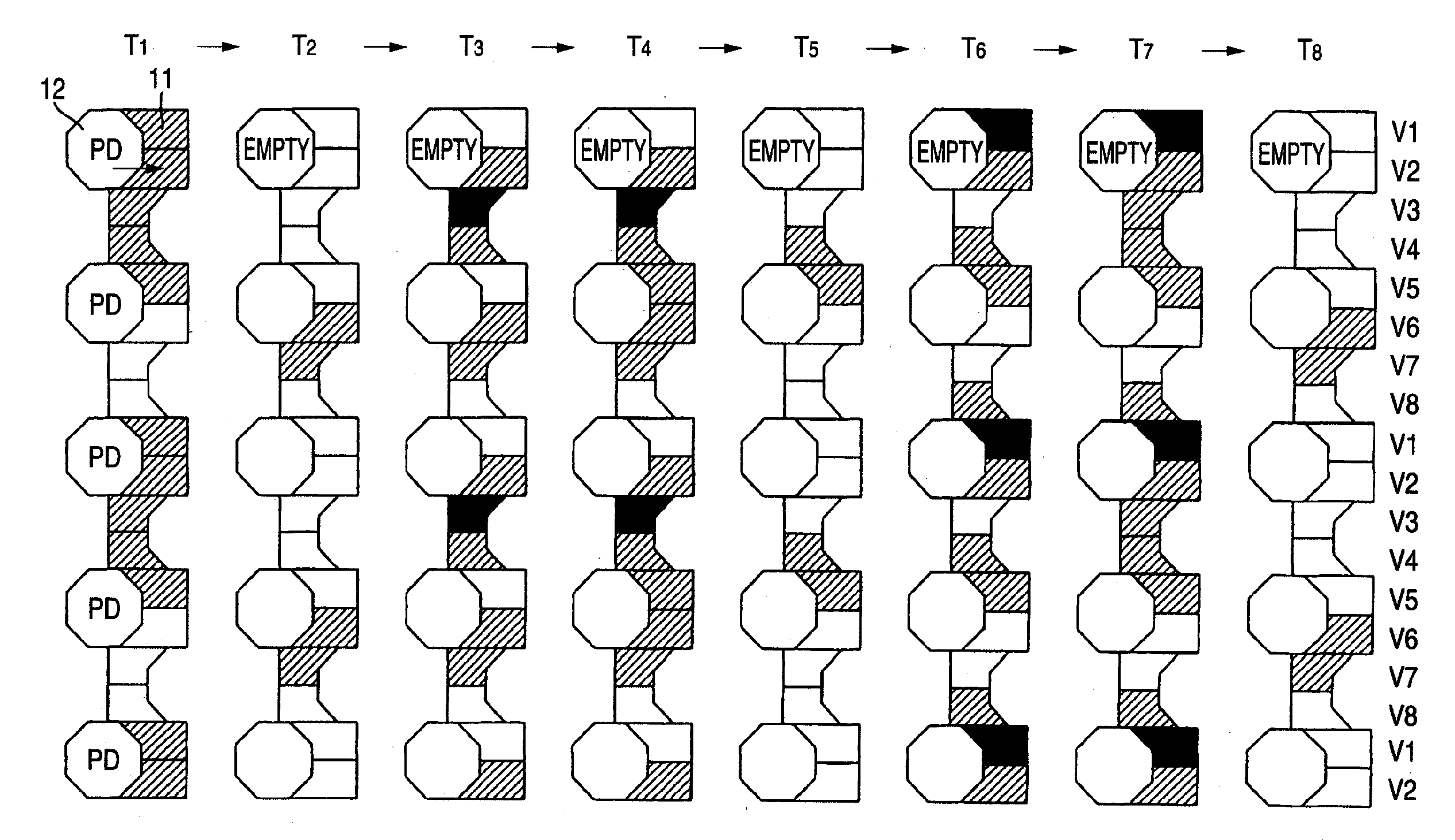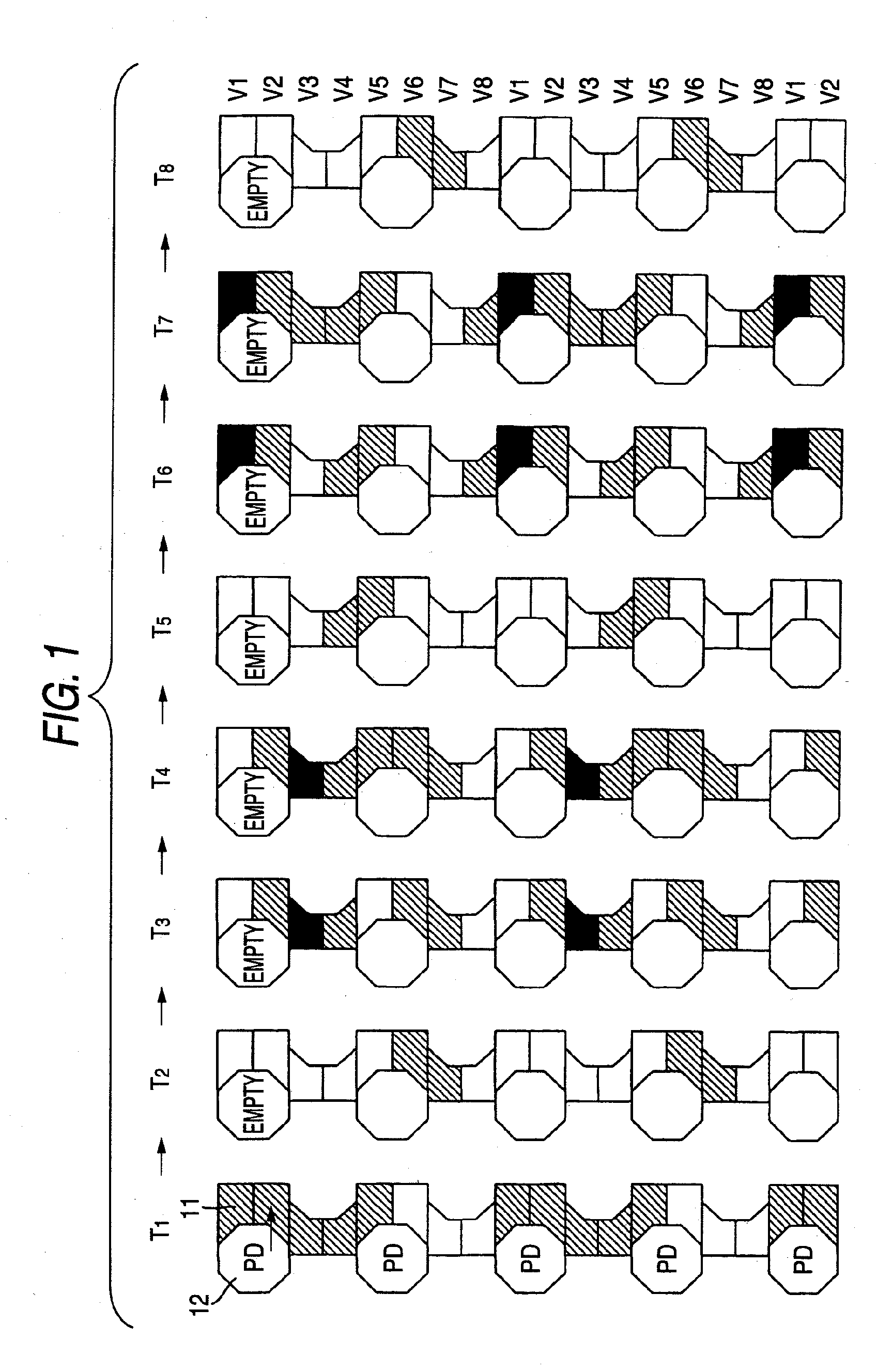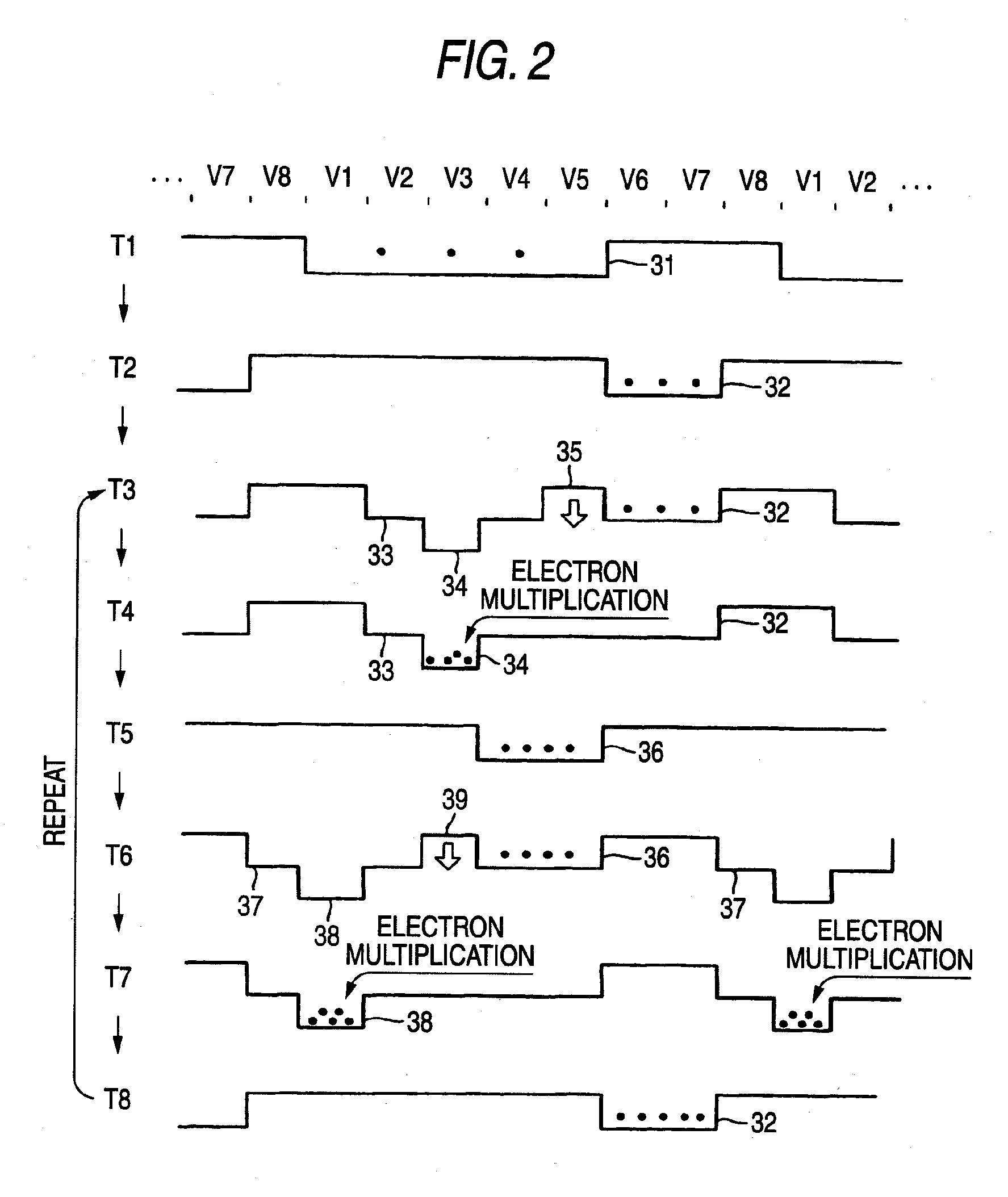Method of driving ccd solid-state image pickup device, and image pickup apparatus
- Summary
- Abstract
- Description
- Claims
- Application Information
AI Technical Summary
Benefits of technology
Problems solved by technology
Method used
Image
Examples
first embodiment
[0085]FIG. 1 is a diagram illustrating a method of driving a CCD solid-state image pickup device of a first embodiment of the invention. The illustrated solid-state image pickup device is an image pickup device which has a honeycomb pixel arrangement shown in FIG. 21A. The figure shows a change of states (T1 to T8) of one pixel (PD) column and vertical charge transfer path of the device.
[0086]Among the illustrated transfer electrodes adjacent to the pixels PD, electrodes V2, V6 are transfer electrodes which function also as a readout electrode. When a high voltage is applied to the readout electrodes, accumulated charges in pixels PD are read out to the vertical charge transfer path. As shown in FIG. 21A, in the honeycomb pixel arrangement, the pixel column next to the pixel column shown in FIG. 1 is staggered by ½ pitch. In the next pixel column, therefore, the readout electrodes are electrodes V4, V8.
[0087]When a high voltage is applied to the electrodes V4, V8, accumulated charge...
second embodiment
[0101]FIGS. 4 to 6 are diagrams illustrating a method of driving a CCD solid-state image pickup device of a second embodiment of the invention. The figures correspond to FIGS. 1 to 3 in the first embodiment, respectively. In the embodiment, a driving method similar to that of the first embodiment is applied to the CCD solid-state image pickup device shown in FIG. 21B.
[0102]In the illustrated example, among the transfer electrodes adjacent to the pixels PD, electrodes V1, V3, V5, V7 are transfer electrodes which function also as a readout electrode. When a high voltage is applied to the readout electrodes, accumulated charges in pixels PD are read out to the vertical charge transfer path. In a state where a signal charge is already read out from a corresponding pixel and the pixel is empty, even when a high voltage is applied to a readout electrode, however, no signal charge is read out.
[0103]In FIG. 4, the meanings of “hollow”, “hatched”, and “solid” in the vertical transfer electro...
third embodiment
[0114]FIG. 7 is a view illustrating a method of driving a CCD solid-state image pickup device of a third embodiment of the invention. Similarly with the read pulse (TG) which is used for reading signal charges from pixels to the vertical charge transfer path, an electron multiplying pulse of high voltage is produced as a binary pulse voltage of, for example, 0 V (VM) and +15 V (VH).
[0115]When rising and falling edges of the electron multiplying pulse are steep (approximately vertical), however, the potential of a transfer electrode to which the electron multiplying pulse is applied is steeply changed, and an electric field applied to the transfer electrode and its vicinity is largely changed, thereby producing a possibility that the electrode and a semiconductor portion in the vicinity may be electrostatically broken. Moreover, the electron multiplying pulse is repeatedly applied many times. Even when electrostatic breakdown does not occur, therefore, the physical properties of the ...
PUM
 Login to View More
Login to View More Abstract
Description
Claims
Application Information
 Login to View More
Login to View More - R&D
- Intellectual Property
- Life Sciences
- Materials
- Tech Scout
- Unparalleled Data Quality
- Higher Quality Content
- 60% Fewer Hallucinations
Browse by: Latest US Patents, China's latest patents, Technical Efficacy Thesaurus, Application Domain, Technology Topic, Popular Technical Reports.
© 2025 PatSnap. All rights reserved.Legal|Privacy policy|Modern Slavery Act Transparency Statement|Sitemap|About US| Contact US: help@patsnap.com



